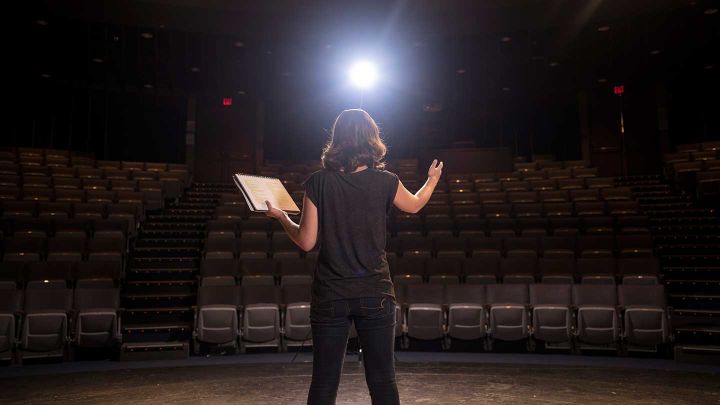Many critics had feared that the middling success of “Cars 2,” “Brave” and “Monsters University” meant that Pixar was experiencing a severe case of writer’s block that might never end. It certainly seemed that the studio’s narrative well might have run dry, which could have spelled an end for the high quality of animation that Pixar was famous for. However, “Inside Out” has officially put those fears to bed.
The latest from Pixar, “Inside Out,” which the Student Activities Office is showing this Saturday at 8 p.m. in the CFAC auditorium, is a lighthearted comedy-adventure which follows a young girl named Riley as she is uprooted from her comfortable and familiar home in Minnesota and moved to the bustling city of San Francisco.
Riley is controlled by her emotions and much of the film takes place inside of her mind, where each of her emotions is personified by a cartoonish character. There’s Joy (Amy Poehler), Sadness (Phyllis Smith), Fear (Bill Hader), Anger (Lewis Black) and Disgust (Mindy Kaling). These emotions have had an easy job so far as Riley has yet to face many of the hardships of growing up. But, with her recent move to the city and the approach of puberty, Riley’s idyllic life gets shaken up and Joy, who has been the dominant emotion in Riley’s life, finds her leadership challenged by Sadness.
The five emotions act essentially as Riley’s inner voices, operating a control panel that, with the push of a button, can decide how Riley feels in any particular moment.
The youngster’s memories are represented by glassy spheres that are color-coded by the dominant emotion in that memory (yellow for joy, blue for sadness, green for disgust, red for anger and purple for fear). These memories are treated like files on a computer as they are shipped from one mental location to another through a series of chutes and tubes. Most memories are shuttled off to long-term storage at the end of the day, while others that are deemed unnecessary are dumped into an abyss to be forgotten. Formative memories, known as core memories, are kept in the central control room and guarded and treasured by Joy.
This envisioning of the abstract concept of emotions and memories is genius in how it is portrayed; what could have been visually complex is instead handled with precise, yet fun and creative, ideas by some of the best animators Pixar studios has to offer. The other non-physical aspects of Riley’s mind such as memories, thoughts, nostalgia, dreams and her train of thought, which is symbolized by a literal train, are made very real and central to the conflict.
Much of this conflict that Joy and her pals experience is directly correlated to how Riley responds to her environment. For instance, when Riley angrily refuses to play along with her father’s childish.antics, structures in her mind, affectionately named Goofball Island and Family Island, crumble into the abyss where her nonessential memories are dumped. “Inside Out” does a splendid job of illustrating the often unapparent consequences that external trauma can inflict on the mind and psyche.
In fact as the movie progresses, it becomes evident that although everything feels safe and happy when Joy is influencing Riley’s emotions, it is necessary and even beneficial for Sadness, Anger, Disgust and Fear to have a say in some matters. True to life, the movie understands that the influence of negative emotions challenges us, matures us and aids in our self discovery and, in Riley’s case, provides the turning point she needs to embrace her new life and be reconciled with her family.
“Inside Out” can at times be a heady concept for younger viewers,which certainly isn’t foreign to Pixar’s narrative style. I appreciate the studio’s desire to stretch and challenge younger viewers through their narrative while at the same time managing to still appeal to all maturity levels. Pixar has always created stories that viewers can grow into, that only get better and more relatable with age, and this one is no exception.
Ultimately, “Inside Out” is a magnificent return to form for Pixar. The film serves up just the right combination of adventure, wit and wisdom to propel the interesting concept and characters towards a thought provoking finale that is sure to leave a good taste in audiences’ mouths.












